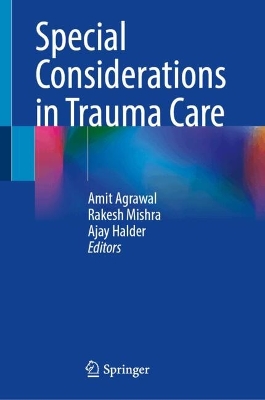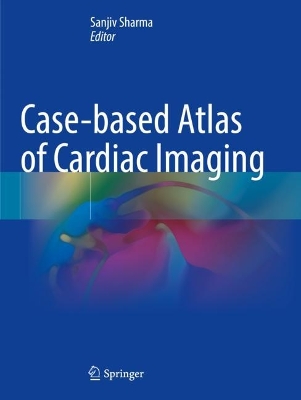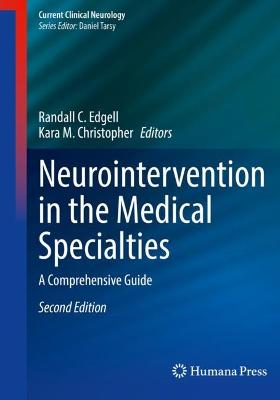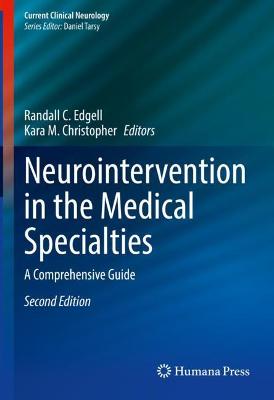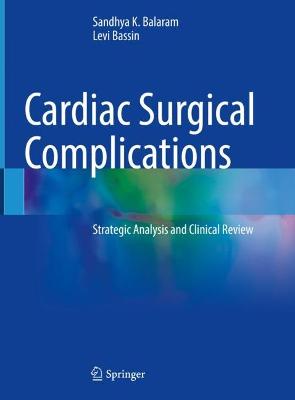Difficult Decisions in Trauma Surgery
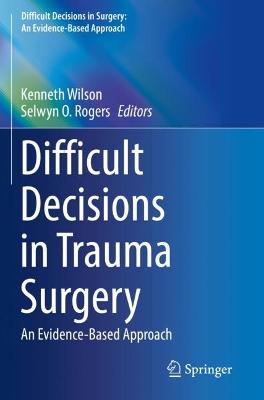 portes grátis
portes grátis
Difficult Decisions in Trauma Surgery
An Evidence-Based Approach
Wilson, Kenneth; Rogers, Selwyn O., Jr.
Springer Nature Switzerland AG
10/2022
459
Mole
Inglês
9783030816698
15 a 20 dias
887
Descrição não disponível.
Part I: Resuscitation.- Difficult Decisions in Trauma - Is ABC the Right Mantra?.- What is the Clinical Impact of Whole Blood as Compared to Component Therapy in Civilian Trauma?.- Does Helicopter Transport to Level I Trauma Centers Improve Mortality.- Futility of Care in Hemorrhagic Shock: When Prolonging the Massive Transfusion Protocol is of No Benefit.- In the exsanguinating trauma patient does REBOA, compared with resuscitative thoracotomy (RT), result in lower complications, morbidity, and mortality?.- Part II: Wound Management.- In Patients with Traumatic Extremity Wounds is Negative Pressure Wound Therapy Superior as Compared to Standard Dressing Changes?.- Enterocutaneous Fistula Management in Trauma.- Part III: Antimicrobial Management.- Does prophylactic antibiotics for emergent tube thoracostomy decrease rates of infection?.- Antibiotics Prophylaxis after Penetrating Colon Injuries.- Antibiotic Regimen in Treating Complicated Intra-abdominal Infections.- Is Vaccine Prophylaxis Necessary for Patients Undergoing Splenic Embolization?.- Part IV: Trauma Imaging.- The Trauma Pan-Scan: Who Benefits from Immediate Whole-Body Imaging?.- Non-Selective Arterial Embolization for Pelvic Fractures.- Clinical clearance of the cervical spine in the presence of a distracting injury.- MRI Clearance for the Cervical Spine.- Part V: Traumatic Brain Injury.- Difficult Decisions in Surgery: An Evidence-Based Approach ECMO safety in the setting of traumatic brain injury.- Can Abdominal Decompression Improve Refractory Intracranial Hypertension?.- Is there an Optimal Screening tool to Best Diagnose and Treat Blunt Cerebrovascular Injury (BCVI)?.- Part VI: Abdominal Trauma.- Does specific sequencing of operative interventions in thoracoabdominal trauma improve outcomes?.- Selective Nonoperative Management for Abdominal Gunshot Wounds.- What is the optimal management of traumatic duodenal injury?.- Timing of Ostomy Reversal in Trauma and Acute Care Surgery.- Part VII: Thoracic Trauma.- Resuscitative Thoracotomy.- Extracorporeal Membrane Oxygenation for Patients with Traumatic Injury and Respiratory Failure.- Is There a Gold Standard for Screening Blunt Cardiac Injury?.- Optimal Chest Tube Size for Hemothorax Evacuation.- Should Intrapleural Fibrinolytic Therapy be a First-Line Therapy for Post-Traumatic Retained Hemothoraces?.- Rib Plating in the Acute Trauma Setting.- Does Thoracic Irrigation at the Time of Chest Tube Placement Decrease the Incidence of a Retained Hemothorax?.- The Timing of VATS for a Retained Hemothorax.- Part VIII: Ethics.- Donation after Cardiac Death in the Emergency Department.- Resuscitative Thoracotomy for Organ Donation.- Resilience training for the trauma surgeon.- Youth Violence Prevention: Violence Recovery Programs.- Part IX: Peripheral Vascular Trauma.- Are Temporary Vascular Shunts (TVS) Effective Damage Control Adjuncts for Limb Salvage?.- Difficult Decisions in Surgery: An Evidence-Based Approach Limb salvage for the mangled extremity.- Part X: Pediatric Trauma.- The use of FAST in the Pediatric Trauma Setting.- Selective Nonoperative Management of Children with Penetrating Abdominal Trauma.- Are outcomes equivalent for injured children treated at pediatric or adult trauma centers, and what are the implications with respect to the design of optimal trauma systems?.
Este título pertence ao(s) assunto(s) indicados(s). Para ver outros títulos clique no assunto desejado.
Resuscitation;Wound management;Antimicrobial management;Transplant Considerations;Emergency room thoracotomies;Traumatic brain injury;Trauma imaging;Abdominal trauma;Thoracic trauma;Vascular trauma;Pediatric trauma;Trauma & ethics
Part I: Resuscitation.- Difficult Decisions in Trauma - Is ABC the Right Mantra?.- What is the Clinical Impact of Whole Blood as Compared to Component Therapy in Civilian Trauma?.- Does Helicopter Transport to Level I Trauma Centers Improve Mortality.- Futility of Care in Hemorrhagic Shock: When Prolonging the Massive Transfusion Protocol is of No Benefit.- In the exsanguinating trauma patient does REBOA, compared with resuscitative thoracotomy (RT), result in lower complications, morbidity, and mortality?.- Part II: Wound Management.- In Patients with Traumatic Extremity Wounds is Negative Pressure Wound Therapy Superior as Compared to Standard Dressing Changes?.- Enterocutaneous Fistula Management in Trauma.- Part III: Antimicrobial Management.- Does prophylactic antibiotics for emergent tube thoracostomy decrease rates of infection?.- Antibiotics Prophylaxis after Penetrating Colon Injuries.- Antibiotic Regimen in Treating Complicated Intra-abdominal Infections.- Is Vaccine Prophylaxis Necessary for Patients Undergoing Splenic Embolization?.- Part IV: Trauma Imaging.- The Trauma Pan-Scan: Who Benefits from Immediate Whole-Body Imaging?.- Non-Selective Arterial Embolization for Pelvic Fractures.- Clinical clearance of the cervical spine in the presence of a distracting injury.- MRI Clearance for the Cervical Spine.- Part V: Traumatic Brain Injury.- Difficult Decisions in Surgery: An Evidence-Based Approach ECMO safety in the setting of traumatic brain injury.- Can Abdominal Decompression Improve Refractory Intracranial Hypertension?.- Is there an Optimal Screening tool to Best Diagnose and Treat Blunt Cerebrovascular Injury (BCVI)?.- Part VI: Abdominal Trauma.- Does specific sequencing of operative interventions in thoracoabdominal trauma improve outcomes?.- Selective Nonoperative Management for Abdominal Gunshot Wounds.- What is the optimal management of traumatic duodenal injury?.- Timing of Ostomy Reversal in Trauma and Acute Care Surgery.- Part VII: Thoracic Trauma.- Resuscitative Thoracotomy.- Extracorporeal Membrane Oxygenation for Patients with Traumatic Injury and Respiratory Failure.- Is There a Gold Standard for Screening Blunt Cardiac Injury?.- Optimal Chest Tube Size for Hemothorax Evacuation.- Should Intrapleural Fibrinolytic Therapy be a First-Line Therapy for Post-Traumatic Retained Hemothoraces?.- Rib Plating in the Acute Trauma Setting.- Does Thoracic Irrigation at the Time of Chest Tube Placement Decrease the Incidence of a Retained Hemothorax?.- The Timing of VATS for a Retained Hemothorax.- Part VIII: Ethics.- Donation after Cardiac Death in the Emergency Department.- Resuscitative Thoracotomy for Organ Donation.- Resilience training for the trauma surgeon.- Youth Violence Prevention: Violence Recovery Programs.- Part IX: Peripheral Vascular Trauma.- Are Temporary Vascular Shunts (TVS) Effective Damage Control Adjuncts for Limb Salvage?.- Difficult Decisions in Surgery: An Evidence-Based Approach Limb salvage for the mangled extremity.- Part X: Pediatric Trauma.- The use of FAST in the Pediatric Trauma Setting.- Selective Nonoperative Management of Children with Penetrating Abdominal Trauma.- Are outcomes equivalent for injured children treated at pediatric or adult trauma centers, and what are the implications with respect to the design of optimal trauma systems?.
Este título pertence ao(s) assunto(s) indicados(s). Para ver outros títulos clique no assunto desejado.


